Proper Lubricant Can Reduce Maintenance Costs
Proper Lubricant – Choosing the proper lubricant can reduce costs. Mobile and industrial assets use mechanical energy to move, perform work, and to overcome friction forces between surfaces in relative motion. The greater the friction force to be overcome between components in relative motion, the more energy will be required for the operation of mobile and industrial assets.
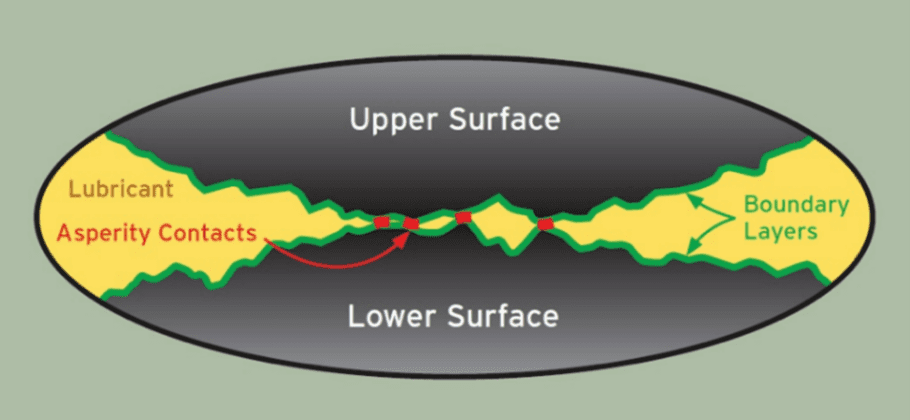 Figure 1 – Metallic contact between roughness creates friction and energy consumption
Figure 1 – Metallic contact between roughness creates friction and energy consumption
An increase in the energy expended to overcome the friction between components in relative motion will have a direct impact on the energy supply (electrical and mechanical) to the mobile and industrial asset, and consequently, an increase in costs.
Energy efficiency can be achieved by reducing friction between components in relative motion, and one of the best ways to do this is to use good lubrication practices, which includes the use of high-performance lubricating oils and greases that help mitigate the causes of friction such as carbon deposits, sludge, and varnish residues.

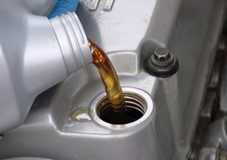 Figures 2/3 – Lubrication reduces friction and decreases energy consumption
Figures 2/3 – Lubrication reduces friction and decreases energy consumption
Proper Lubricant Oils: Mineral vs Synthetic
Mineral-based lubricating oils perform worse than synthetic lubricating oils when correlating Kinematic Viscosity and Service Temperature. Mineral-based lubricating oils also have lower resistance to thermo-oxidation compared to synthetic lubricating oils.
At high Service Temperatures, the Kinematic Viscosity significantly decreases causing degradation and premature wear of the mobile or industrial asset due to the contact of metallic surfaces in relative motion. The degradation of mineral-based oils is the main cause of the formation of sludge and varnish deposits, greatly affecting the reliability and availability of the mobile or industrial asset.
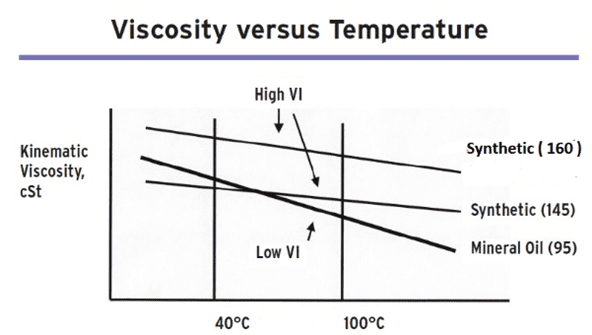
 Figures 4/5 – Synthetic oils: higher VIs and resistance to thermo-oxidation
Figures 4/5 – Synthetic oils: higher VIs and resistance to thermo-oxidation
On the other hand, synthetic lubricating oils offer much greater stability of Kinematic Viscosity with Service Temperature as well as good thermal stability, better lubricity, superior detergent properties, and resistance of the lubricating film.
By reducing friction between metallic surfaces in relative motion, synthetic lubricating oils can help improve the efficiency of the mobile or industrial asset and, in turn, reduce the amount of electrical energy or fuel required to operate equipment such as speed reducers, compressors, pumps, and mobile equipment.
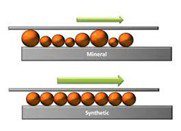
 Figures 6/7 – Synthetic oils: lower friction and electrical energy consumption
Figures 6/7 – Synthetic oils: lower friction and electrical energy consumption
Synthetic lubricating oils operate very well at low temperatures, so in regions with very low ambient temperatures, there is another direct advantage in electrical energy savings to be obtained with the use of synthetic lubricating oils.
Synthetic lubricating oils perform well at low temperatures, and in regions with harsh winters, this property provides another way to save energy (electrical and mechanical). It is noteworthy that mineral-based lubricating oils will need, depending on the ambient temperature, to be preheated when starting the internal combustion engine Diesel Cycle/Otto Cycle 4T due to their high Pour Points which make them very viscous in the crankcase and with poor pumpability.
However, this pre-heating process consumes additional energy. Given the above, synthetic lubricating oils are generally proper for ambient temperatures of up to -30 ºC and will not require preheating at ambient temperatures above -30 ºC.

 Figures 8/9 – Mineral-based oils: high Pour Point, high Kinematic Viscosity, and difficulty in pumping.
Figures 8/9 – Mineral-based oils: high Pour Point, high Kinematic Viscosity, and difficulty in pumping.
Measuring Savings with the Use of Synthetic Lubricants
Once we start using synthetic lubricating oils in mobile or industrial assets, energy savings can be measured by comparing the following parameters:
- Increase in the Output Power of the mobile or industrial asset due to improved efficiency obtained with the reduction of friction between surfaces in relative motion with the formation of more consistent lubricating films.
- Variation in the service temperature of components in relative motion and of the lubricating oil: a reduction in the service temperature of the lubricating oil will reduce electrical energy consumption.
- Electrical energy consumption: reduction in electrical energy consumption in electric motors, hydraulic centrifugal pumps, speed reducers, etc.
- Reduction in fuel consumption of mobile equipment.
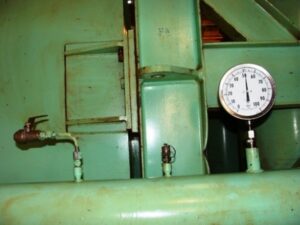
 Figures 10/11 – Synthetic oils and greases: energy and fuel savings.
Figures 10/11 – Synthetic oils and greases: energy and fuel savings.
For an accurate and fair comparison of assets with a view to verifying energy consumption, the following conditions must remain consistent:
- Mobile or industrial assets must operate under similar load conditions, operational conditions, and speeds when comparative readings are taken.
- Use similar quantities of lubricant when conducting the evaluation.
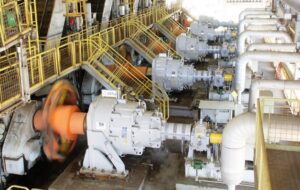
 Figures 12/13 – Assets under similar operational conditions for evaluation.
Figures 12/13 – Assets under similar operational conditions for evaluation.
- The ambient temperature or the premises in which the evaluated mobile or industrial assets are operating must be similar.
- Use the same instruments and methods to evaluate energy consumption for mobile or industrial assets operating with mineral-based lubricating oils and greases and synthetic lubricating oils.
It is recommended that a considerable number of similar assets under similar operational conditions be evaluated using mineral-based and synthetic lubricating oils and greases to achieve a more representative data base regarding energy or fuel savings.
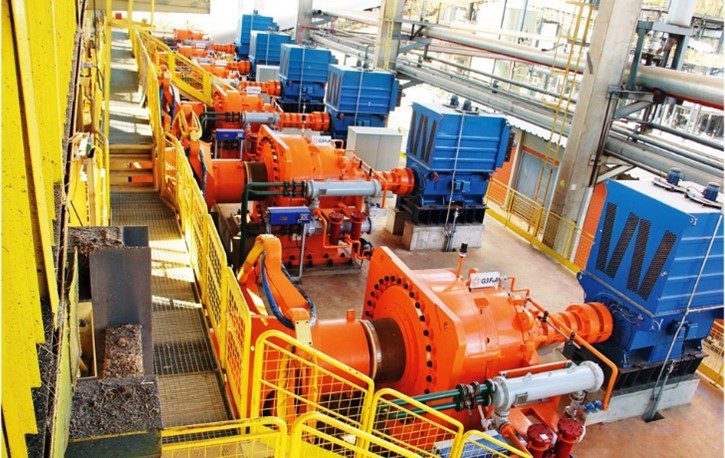
 Figures 14/15 – More equipment evaluated, greater representativeness.
Figures 14/15 – More equipment evaluated, greater representativeness.
Conclusion
High-performance synthetic lubricating oils and greases may be more expensive upon purchase, and the energy or fuel savings may not be noticeable at the start of their use. However, the higher acquisition cost can be justified with an increase in the overall efficiency of the mobile or industrial asset and a reduction in the total cost of ownership.
Very importantly: switching to high-performance synthetic lubricating oils or greases is an environmentally sustainable action, provides lower energy consumption, reduces CO2 emissions, and increases disposal intervals due to much longer service intervals, thereby reducing the environmental impact from the lubrication of mobile and industrial assets.






















